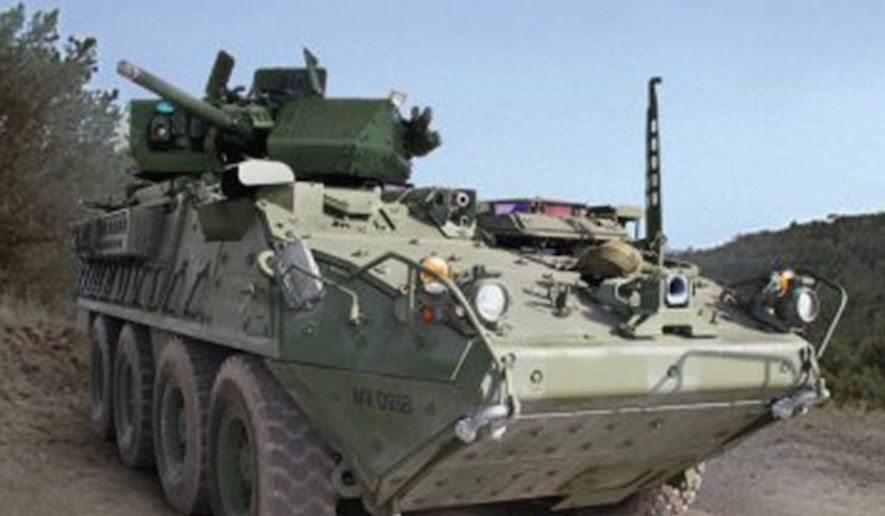The Army is getting closer to fielding laser weapons on some of its ground combat vehicles, and a high-stakes “shoot-off” between major defense companies next spring will mark a turning point in the Pentagon’s quest for a fully operational laser system.
Army officials are preparing for a spring face-off at Oklahoma’s Fort Sill, where two leading Pentagon subcontractors — Raytheon and Northrop Grumman — will test their own respective versions of a 50-kilowatt-class laser weapon system mounted atop a Stryker vehicle. Raytheon and Northrop Grumman are subcontractors for the groundbreaking effort, officials said, with Kord Technologies serving as the prime contractor for the Pentagon’s laser weapon program.
The project is a key part of the military’s broader modernization effort and its embrace of cutting-edge technologies. Laser weapons are expected to soon play key roles in U.S. air and missile defense and in some cases could quickly replace traditional artillery or cannons.
The goal, officials said, is operational fielding of laser systems by 2022.
“This is moving extremely fast,” said Army Col. G. Scott McLeod, program manager for the Rapid Capabilities and Critical Technologies Office’s (RCCTO) Directed Energy-Maneuver Short-Range Air Defense initiative.
“Everybody has done a great job of managing all of the technical complexity and challenges of getting these new components built and integrated so we can move to the shoot-off next year,” he said.
Army officials said the work by Raytheon and Northrop Grumman is being done in separate areas at an integration facility in Huntsville, Alabama. Keeping the two efforts separate ensured the integrity of the competition, the Pentagon said.
The laser systems already have been tested to evaluate their control and functionality against airborne targets. At the spring shoot-off itself, Army officials said the two laser systems will face a “series of 12 vignettes that will increase in difficulty,” with the weapons expected to successfully take out drones and other potential threats.
Officials said they don’t expect either system to perform flawlessly during the competition, but they believe the shoot-off will offer key insights in helping the Pentagon determine which system to pursue and what kinds of improvements need to be made.
• Ben Wolfgang can be reached at bwolfgang@washingtontimes.com.




Please read our comment policy before commenting.